
Text submitted by Igor Nikitin.
Being born in the USSR, I have a special place in my heart for the Eastern Bloc cars, especially Soviet ones. This is normal.
Besides, when you only observe, you tend to romanticize. As a kid, you don’t have to repair these cars in the open air (because a garage is another luxury in the Eastern Bloc countries); you don’t hunt for parts and tires. You just see these cars passing by, being driven by a lucky owner. I remember my childhood drawings. When I was 12 and brand new Lada sedans were still considered a worthy purchase, I imagined how I would buy one when I grew up. I grew up. Lada sedans are not produced anymore, but I still have a thing for them, just as my Canadian friend, who is older than me, has a thing for Barracudas—that’s what he saw around him when growing up.

Even though Ladas were officially sold in Canada for an impressive term of 20 years, they remain in the shadow when speaking about classic cars. They do satisfy the age requirement to be called classic cars, but their following is not comparable to, let’s say, Mustang’s following. Most people restore or import Ladas for nostalgic or sentimental reasons (such as, “My father owned one”). Some get these cars because of curiosity.
It is difficult to come up with a marketing profile of a typical Lada owner in North America because there is no such thing as a typical North American Lada owner. Speaking from my experience, it could be a student in his mid-20s who saved money to get one, or it could be a middle-aged schoolteacher who has a family and lives in suburbs, or it could be a millionaire who wants a weird addition to his car collection. It could be a girl who doesn’t even know how to drive a manual, but her grandpa was from an Eastern Bloc country, and she wants to feel (or rebuild) a connection to that world by buying such a car. I had all of these individuals as clients in the past, not to mention that they were both native English speakers or first-generation immigrants.

Lots of things surprised me during my “career” as an Eastern Bloc vehicle importer. I was surprised when a first US-based millionaire contacted me, wishing to import a Lada –I had a bias that such guys only looked for Bentleys and Ferraris. Then, I was very surprised when a Russian political opposition representative, a fairly well-known person, contacted me about importing a Lada to the US, where he lived at that time. I was also surprised when one of my imports ended up in a famous private Florida museum. And when one Canadian guy contacted me and said after we spoke:
– Yes, I’m in; let’s do it; I’ll take it.
– Which one? – I asked. – We had discussed several models.
– All of them, – he replied.
And for the first time, I shipped a full 40-ft container with 3 Ladas inside—all for one person, who became a good friend of mine later on.

However, there are prejudices that come with Ladas in North America, which I don’t like. How can I describe it? Let’s say a Trabant—a typical representative of an Eastern Bloc car—doesn’t spark a love-and-hate conversation, yet a Lada does. Still, I guess any publicity is good as long as it makes people talk about the subject matter, though I feel more comfortable spending time (even online!) among like-minded individuals who love weird Eastern Bloc time vehicles despite their lack of “real car” features.

Imho, it is incorrect to judge a vehicle produced behind an Iron Curtain and compare it to a same-year car produced in the Western world. In the East, there had been a highly militarized society where the main expectation from a car was that it should have 4 wheels and a roof, whereas in the West it was about cherishing life and comfort. I remember once doing a fun comparison of my 1987 Volga GAZ-24 to my friend’s 1987 Audi 80. His Audi looked like a spaceship compared to my Volga. We had a good laugh. It is important to understand that cars are a significant and inseparable part of the history of humankind, and history is interesting and it is worth learning and preserving.
Related CC reading:
Vintage R&T Review: 1975 Lada 1500 – “… soon To Be Imported To The US”
Automotive History: An Unlikely Story – How Soviet Ladas Were Almost Sold In The US



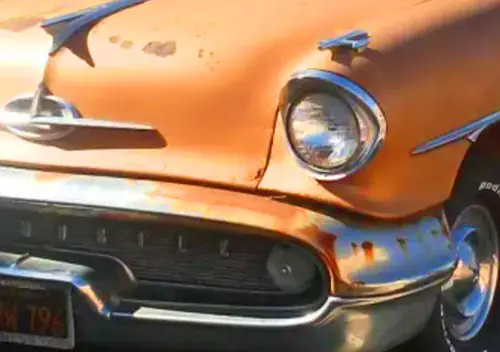
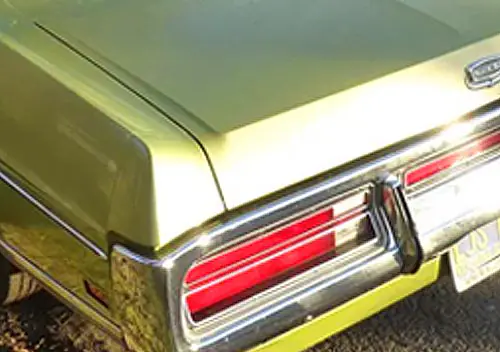
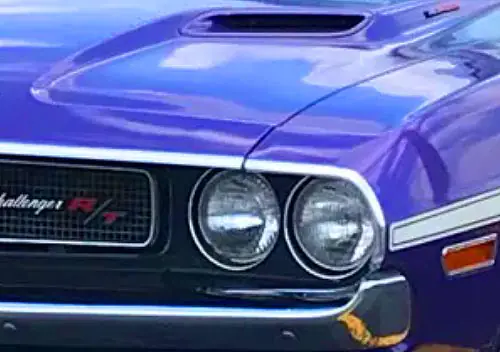


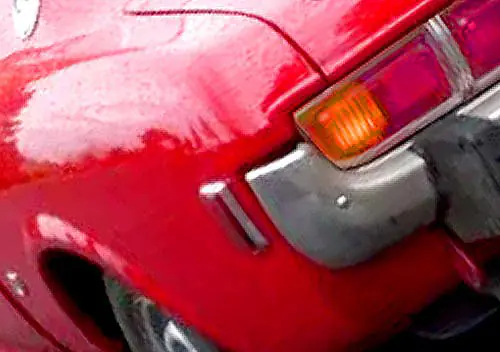

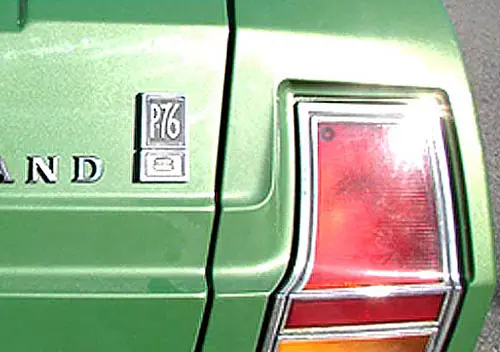
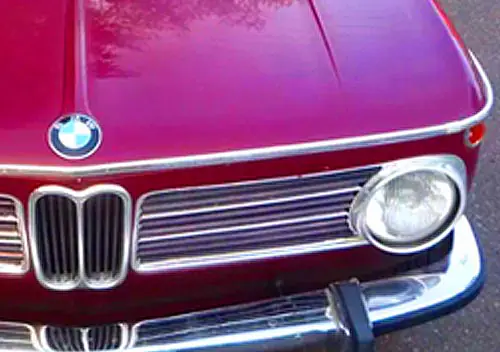


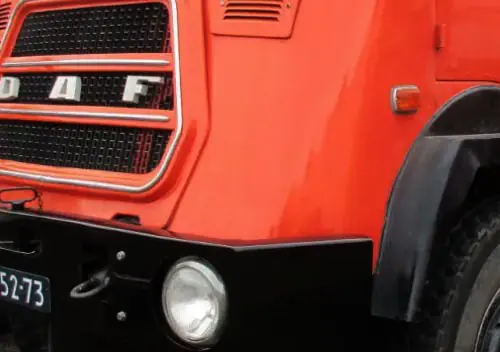
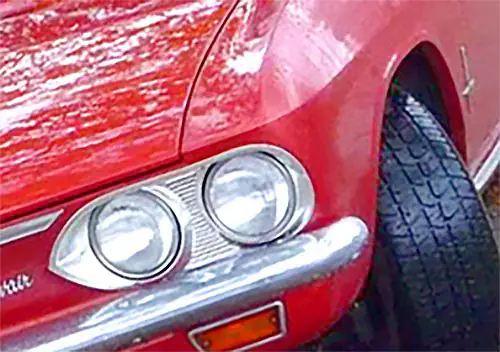
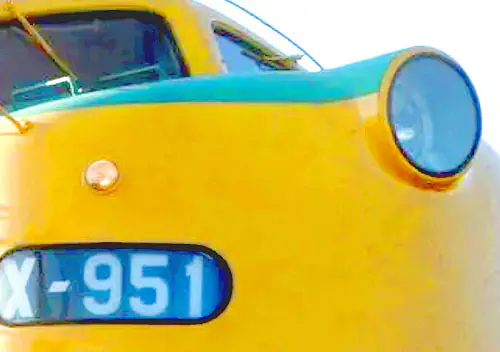

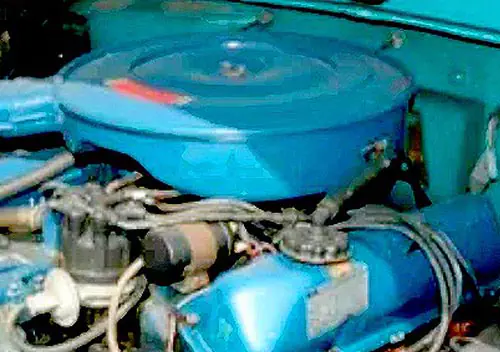



Lada sedans, and the Lada Niva SUV, were quite common in Canada, through the late ’70s, and early ’80’s. They did have a decent dealer network, good distribution, and parts supply. No question, they took the Canadian market seriously. Advertising regularly, in major newspapers.
With new car sales in fifty-seven counties in 1980, they weren’t considered an upstart unknown car maker. They competed in Canada, primarily on price, and economy.
For decades, much of the Canadian population has lived in a west to east ribbon, spanning almost 8,000kms. Using the Trans-Canada highway, as a measure of width. Very cold weather farther north, and proximity to the US border to the south, and a major trading partner, keeps millions of people living in this ribbon. As it also makes car sales, and distribution easier, and cheaper.
Until the ’80’s, the new car market remained somewhat eclectic here, with a significant variety and price range available to buyers. Many buyers were loyal, to Lada-made autos.
sp: “fifty-seven countries in 1980″ (globally)
As a first generation Dutch Canadian I don’t have any burning desire to own a DAF, probably because nobody in my family owned a car before emigrating.
Anyway a Lada is a much more interesting proposition. I haven’t seen any of your imports on the road in Ontario, I’ll keep looking.
I’m a Russian Motocycle owner and Enthusiast, as I grew up on a remote dairy farm I grew to like things that work and work well, this often comes with them being different .
I like the basic no nonsense Lada automobile for what it is .
-Nate
Several years ago I saw a Ural motorcycle in the parking lot of a Seattle supermarket. I think someone in Seattle was importing them at the time. Am I right, the Ural was a knockoff of a BMW motorcycle?
Urals officially came to the US God knows how many years ago, even now it’s probably safe to say – decades ago. So the one you saw must have been one of those – sold by some dealer (the network before 2022 was extensive!). I shipped 3 Soviet Urals to North America. Imho, the new ones are significantly more reliable. However, they are not true Urals – they look the same and have the same name but its a different modern bike – Brembo brakes and such…
I owned several Ladas in the US way before they were cool and I have zero eastern European roots. I had test driven a Lada New in 1983 but being American obviously I couldn’t legally import one, fast forward years later I bought a Samara from a friend in BC who delivered it to Seattle, then I had 3 more! Then I imported a 2107 Toscana edition from Germany then a Signet 1.3 automatic from Vancouver Island. It was fun at the time but all of them are gone now
Rarely seen in the US of A, aka a FIat 124 built in the USSR, what could possibly go wrong? Even the town and plant of AutoVAZ had an Italian name: Togliatti. Only a Yugo (aka Fiat 128) could be more of more dubious quality. Even so any Lada is no doubt a nostalgic relic for many who had no opportunity to buy cars from outside the Soviet Union and those that survive certainly deserve preservation. Good on ya!
It seems our friend Vlad P. has a Volga that he cherishes… one would think he’d go for something a bit better, say a ZIS or a Chaika…now those are cars I could go for.
Excellent way to describe how to think about Eastern Bloc cars. They’re an artefact of time and place, and the comparison of year on year from the West is clearly irrelevant. Well, perhaps except in places like the UK in the ’80’s, where you could buy a Lada, a Skoda, a Zastava, a FSM Nikki (Fiat 127), and they were suddenly in the mix out of their time and place. But super-cheap, which gave them their own place in a capitalist world, and a fair few sales, as I understand it.
The Millionaire in The Lada. Sounds like a film, you know.
Not just any Lada, Skoda or Zastava but whole ranges of them. We got the FSM Maluch sold through Fiat dealers as the Fiat 126P. FSO sold the 125P and Polonez as well initially as Polski Fiat, later as FSO.
I think the FSM Niki must have been for Australia, we didn’t get anything called that in the UK, although we did get the infamous Fiat 127 based Zastava Yugo.
And unfortunately the Wartburg went off sale in the UK in the 1970s when the importer switched to Mazda.
Interesting perspective on the lack of a marketing profile for the typical North American Lada owner. I suspect the unifying theme – from millionaires to regular people – is an appreciation for obscure things. That’s what attracts me to Soviet cars… just a fondness for the unusual, which Ladas certainly are here.
And as an added bonus, I’m sure it’s appealing to be able to indulge in something completely unique that isn’t terribly expensive.
“…the unifying theme – from millionaires to regular people …”
That’s real socialism.
Given the current dismantling of what has been a North American auto industry, I’m half-hoping for a wave of Chinese vehicles into Canada.
If the domestic industry is shuttered, we might as well start importing the best product available. Two million cars a year will have to come from somewhere.
Someone on another site proposed allowing unlimited numbers of Chinese cars into the US tariff-free, but only if they’re less than 13 feet long, less than 5 feet high and a similarly tight width limit. This would both supply the underserved small-car market here and force Chinese companies to set up local assembly plants for anything larger and more profitable.
I came across many Ladas during my shady used car days. This would have been in the early 1990s, so the cars were not so old. The Lada and the Skoda had kind of a cult following at the time.
The Lada was an odd car. Some were really good and reliable and others awful lemons. Which one you got was a crapshoot.
I was in London a couple of weeks ago and saw a LHD Lada Niva, haven’t seen one for years – it was in Oxford St which is in the Ultra Low Emissions zone!
Drove a few of these in Angola. What I found interesting is that they were locally assembled from KD kits supplied from the Soviet Union. A Lada was well suited for typical African rural road conditions not to mention service availability in bush country. These were easy to work on without a lot of specialized tools.
It didn’t get cold where I was, but I understand from others that Ladas were renowned for easy winter starting and the effectiveness of their heaters. May partially explain their popularity in Canada.
Plenty of Ladas showed up in New Zealand reaction was mixed but they did sell most often because they were cheap a friend who thinks Nissans are great said her Lada wagon was the best car she ever owned it withstood the ‘road’ she lives on for many years when a Volvo fell apart within a year.
“…it withstood the ‘road’ she lives on for many years when a Volvo fell apart within a year.”
Höhö – Presumably a specimen that had previously served elsewhere for thirty years.
Note: The Volvo, of course.
There is a fascinating “sub – history” about the Lada, including that in the mid – 60’s, the US was *this close* to approving hi – tech US machine tooling for the Togliatti plant, and there are three extensive articles on the “Driven to Write” site about this; and yes, despite the fact that President Johnson, the CIA. and the US Dod being on board with this, US Republican Congressman blocked this particular sale:
Here is Part One of the series of articles (with some excerpts):
VAZ: Diplomacy, Politics, and Urban Legends (Part One) – Investigating the overlooked and unexplored history of VAZ.
https://driventowrite.com/2022/05/03/vaz-diplomacy-politics-and-urban-legends-part-1/
“There was an obvious gap in the market that needed to be filled: a small, affordable family car for the ordinary citizen, the equivalent of a Ford Anglia 105E or its successor, the first-generation Escort. The car that would fill this gap was the Zhiguli. What is little known is that the United States, at least with Lyndon B. Johnson in the White House, was actively interested in supporting and assisting this project…
We understand that there was a genuine, if tentative, US interest in assisting Fiat to build the VAZ plant. It was seen as a good way of improving US-Soviet relations without the risk of the Soviets gaining access to any critical technologies that could possibly be used against the US. Did this interest bear fruit, though, or did it come to nought and, if so, why? This will be investigated in the second part of this series…”
VAZ: Diplomacy, Politics, and Urban Legends (Part Two)
https://driventowrite.com/2022/05/10/vaz-diplomacy-politics-and-urban-legends-part-two/#more-84204
“So far, we’ve learned that President Lyndon Johnson wanted the US to get involved in the construction and establishment of what was to be the VAZ factory by providing a $50 million loan through the Ex-Im Bank and selling industrial equipment for it…
So, in a memorandum dated 9th April 1968, Johnson’s Special Assistant, Walt W. Rostow, argued for the sale of industrial machinery made by Gleason Works of Rochester, New York (famous in automotive circles for the Torsen limited-slip differential) to the Soviets… The CIA and the DoD were sure these machines would actually be used in the Fiat plant. Furthermore, this sale would not disrupt Gleason’s defence priorities, and similar machinery from the same firm had already been licensed in 1966 for use in a Soviet-built automotive plant… Furthermore, the financing for this equipment was all private, and no US taxpayer money was involved, either as a loan or as a credit guarantee…
However, despite the opinion of every relevant official and agency, the opposition put paid to his plans. This led Fiat to bankroll the project privately and procure the necessary equipment from other countries…
Johnson was on board with the project: he said it was a “constructive and useful step” that would be beneficial to all parties involved and that, because he agreed with its goals, he had asked the Ex-Im Bank to approve the loan. But, he said, “some members of Congress had felt that to approve the loan would be giving aid to the Communists.” Additionally, despite what he called a successful four years in Congress on the domestic and international front, the election year was coming and anything that could be used to embarrass his administration was fully exploited both by the Republicans and by some self-serving members of his own party… This, of course, meant that many things he felt were worthwhile ran into obstacles…
Fast forward to 1969. Richard Nixon was now in the Oval Office, and had appointed none other than Henry Kissinger as his Assistant for National Security Affairs. In a memorandum dated 27th March 1969… US Republican Senator Charles Percy recounted his lengthy (two hours and a half) discussion with Soviet Ambassador Anatoly Dobrynin, a rather astute diplomat who was “very skilled in talking a great deal, seemingly in response to a question without ever directly answering the question.”
As to the VAZ factory, Ambassador Dobrynin said that, when the Italians told the Soviets that they could purchase $30 million of industrial machinery from the US, they were “highly skeptical” and were proven right, because the US “always puts politics ahead of good sound economics.” Because of this, he was not optimistic about US-USSR trading opportunities…
Percy countered that the USSR posed a threat to US national security and that it armed the Vietnamese who were killing “American boys,” and that assisting the Soviet Union to build trucks would be “directly related to the kind of military assistance that they would be providing to North Vietnam.” Dobrynin countered that the Soviet Union was capable of producing whatever it needed and that, if they could not make a deal with the US, they could always make a deal with other countries. A case in point was “the machine tools that the United States would not furnish for the Fiat factory” were all obtainable from Western European countries that were glad to have the business…
The discussion between Dobrynin and Percy leads us to understand that the Republican Party, not content with blocking the Ex-Im Bank loan to Fiat, proceeded to block the export of American-made machine tools to the USSR after Nixon took over…”
Here is Part Three of the series:
VAZ: Diplomacy, Politics, and Urban Legends (Part Three) – Debunking the persistent legend of Russo-Italian rust.
https://driventowrite.com/2022/05/17/vaz-diplomacy-politics-and-urban-legends-part-3/
“For the Soviet government at least, the project was a major success: they took a good initial design and successfully adapted it to their country’s conditions and needs. They even sold it successfully in export markets. For the Italians, though, things played out somewhat differently: this project would become part of a narrative that still haunts the entire Italian automotive industry, and this is precisely the issue we address in this final part of the series. As one would easily suspect, I am referring to the ‘inferior Soviet steel’ narrative that, until fairly recently, was almost universally accepted as fact…
According to this narrative, Fiat was paid by the Soviets in steel. More specifically, rusty, sub-par steel reclaimed from ship-breaking yards. The story goes on: this rusty, sub-par steel was used as raw material by Fiat in its own cars, and also in Lancia models such as the Beta, and even in Alfa Romeos, especially the Alfasud. This, along with other factors, caused Italian cars to rust profusely, far more than any other car built by any other manufacturer since 1960. As I said, this narrative was widely accepted as fact until fairly recently…”
>In the East, there had been a highly militarized society where the main expectation from a >car was that it should have 4 wheels and a roof, whereas in the West it was about >cherishing life and comfort.
.
It’s not about “militarization of society”. The Soviet Union existed in specific historical circumstances. It inherited the society and territory of Tsarist Russia, which was late with the industrial revolution and did not bother to create any significant auto industry. While the West already had at least a century of extensive technology implementation, at the level of family businesses. I remember an advertisement from one of the American manufacturers, if I’m not mistaken, in the 1950s, where it proudly announced that the combined history of all its supplier companies was several hundred years old. The Soviet Union began to build its industry on the pitiful remains of the Tsarist industry, after the collapse of the civil war in the 1920s. It grew it somewhat by the 1940s, after which the cheerful high-tech Nazis came running to it, and destroyed 1700 cities into dust, and killed millions of workers (and consumers, which is also important). As a result, the Soviet Union spent decades restoring its urban and industrial infrastructure, the purchasing power of the population, and the market capacity. At the same time, the USSR, unlike West Germany, did not have a rich post-war sponsor Uncle Sam, who, in exchange for independence and further income from his investments, poured colossal funds into German industry. For example, Deutsche Bank, which was in a holding with Mercedes, since the 1950s ensured the presence in Germany of the capital of the Anglo-American corporation in South Africa, which belonged to Morgan, etc. Actually, Mercedes is now controlled by American capital, which is not talked about too often, so as not to hurt the national pride of the Germans… Well, and the Soviet Union at that time saturated its car market as best it could. To sum up, life, as always, is more complex than slogans about the “militarized communist east”. It is not bad to sometimes think about why, while the USA was producing relatively cheap huge cars with multi-liter engines, even capitalist Europe could not afford anything like that. Apparently, the reason is that the USA, after WWII, had much more money and production forces, untouched by the continental war. Suddenly – and with the Soviet Union, exactly the same logic works: Resources, machines, labor, purchasing power of households, etc. And yes, LADA was an excellent choice for licensed production in its time, for a specific place, time and circumstances.
Whether in Siberia or in Québec, deer do the same damage wherever they encounter a Lada Signet